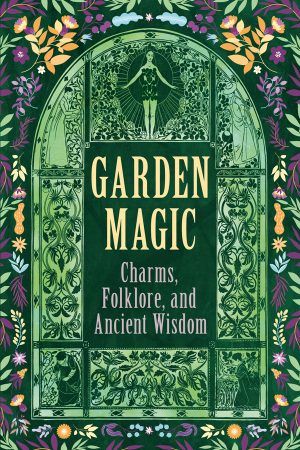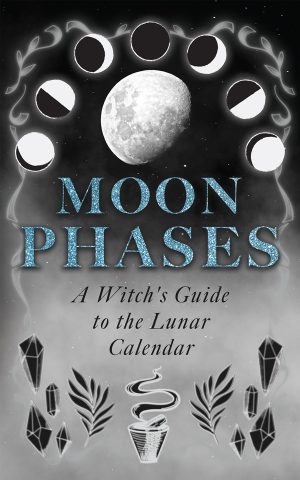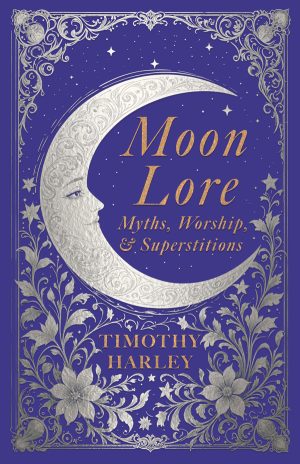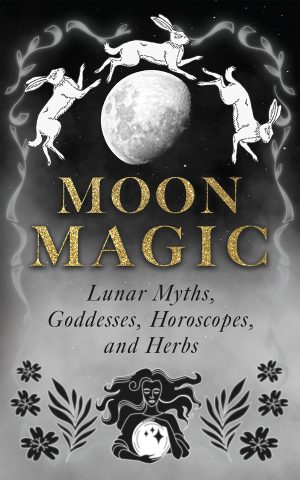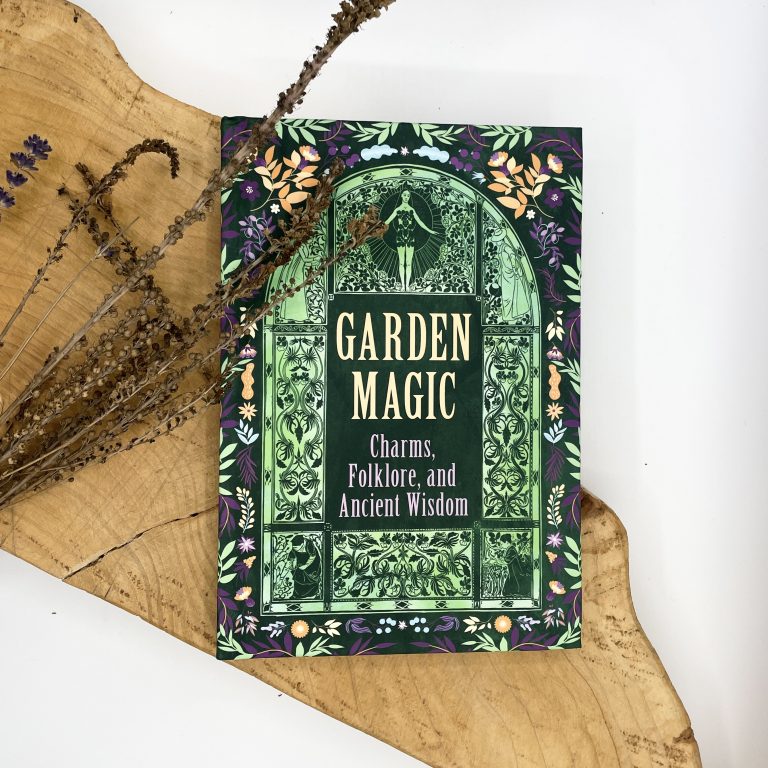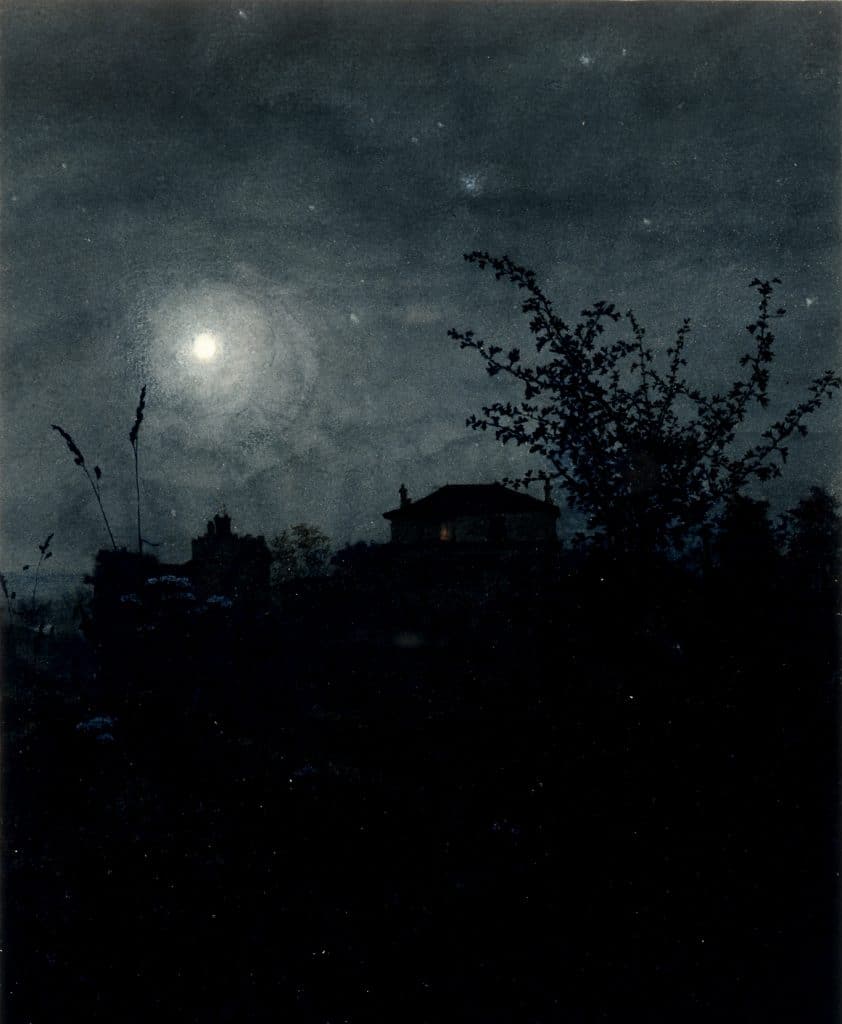Gardeners have long allowed themselves to be governed by the Moon’s cycles and used lunar garden magic to help their plants, herbs, flowers, and trees flourish.
Just as the Moon causes the tides to rise and fall with her gravitational pull, she also has influence over the soil’s moisture levels. When the Moon is waxing (or increasing) from New to Full, extra water is drawn into the earth and seeds absorb more water. This is the time to plant below-ground crops and perennial flowers, while the Moon’s light is growing brighter and stronger night by night. When the Moon is waning (decreasing) from Full to New, we should plant above-ground crops and annual flowers, because the receding moisture encourages root development.
Learn more about lunar garden magic and gardening by the Moon in this blog.
The Moon's Influence Over Plants
During the Middle Ages, and even up till about two centuries ago, there was a very widespread belief that every plant was under the direct influence of some particular planet, and in the writings of some of the old herbalists we find much interesting information on this subject. Aubrey says that ‘if a plant be not gathered according to the rules of astrology, it hath little or no virtue in it.’
In old almanacs we find the supremacy of the Moon over plant growth fully admitted, although the reasoning is sometimes rather abstruse and difficult to our modern intelligence.
In Wing’s Almanac for 1661 we read: ‘It is a common, observation in astrology, and confirmed by experience, that what corn or tree soever are set or sown when the Sun or Moon is eclipsed, and the unfortunate planets predominate, seldom or never come to good.’
Best Phases of the Moon for Gardening
Devonshire farmers have, from time immemorial, made it a rule to gather their apples for storing at the wane of the Moon; the reason being that during the Moon’s increase it is said that the apples are full, and therefore will not keep. Bacon seems to have considered that even the ‘brain of man waxes moister and fuller upon the Full of the Moon.’ And as we study all these old writings, we come to realise that the Moon was held to have a very special and predominant influence over vegetation, and it was said that there existed a sympathy between growing and declining nature and the Moon’s wax and wane.
It is said that if timber is felled when the Moon is on the increase it will decay; and that it should always be cut when the Moon is on the wane.
There seems to be no practical reason for this, yet it is a belief which is common in many countries; and professional woodcutters, whose occupation it is to fell timber, state, as the actual result of their own observations, that the belief is well founded.
The theory given to account for this is that as the Moon grows the sap rises, and the wood is, therefore, less dense than when the Moon is waning, because at that time the sap declines.
The belief in the Moon’s influence as regards timber extends also to vegetables, and was universally practised in England in former times, although one hears less about it now. Just occasionally one meets with an old-fashioned gardener who must sow or plant according to the Moon.
They act upon the maxim that root crops should be sown when the Moon is decreasing, and plants such as peas and beans, which bear their crops on the branches, between the New and the Full Moon.
Tusser writes, with regard to grafting:
In March is good grafting, the skilful do know,
So long as the wind in the East do not blow,
From Moon being changed, till past be the prime,
For grafting and cropping is very good time.
In The Garden of Eden, an old gardening book compiled by Sir Hugh Plat in the year 1600, constant allusions are made to the necessity of studying the Moon’s phases in gardening and grafting operations. The writer even considered that the Moon would exercise her powers in making single flowers double, if only she were respectfully courted. For instance: ‘Remove a plant of stock Gilliflowers when it is a little wooded, and not too green, and water it presently. Do this three days after the full, and remove it twice more before the change. Do this in barren ground; and likewise, three days after the next Full Moon remove again; and then remove once more before the change. Then at the third Full Moon, viz: eight days after, remove again, and set it in very rich ground, and this will make it to bring forth a double flower; but if your stock Gilliflowers once spindle, then you may not remove them. Also, you must make Tulips double in this manner. Some think by cutting them at every Full Moon before they bear to make them at length to bear double.’
Zodiac Signs for Gardening
In The Countryman’s Recreation, published in 1640, the following advice is given:
‘From the 1st day of the New Moon unto the 13th day thereof is good for to plant, or graffe, or sow, and for great need some doe take unto the 17th or 18th day thereof, and not after, neither grafte nor sow, but as is afore-mentioned, a day or two afore the change, the best signs are Taurus, Virgo, or Capricorn.’ With regard to the treatment of fruit trees, the author goes on to tell us: ‘That trees which come of nuts should be set in the Autumn in the change or increase of the Moon, fruit, desired of good colour, and untouched by frost, should be gathered, when the time is fair and dry, and the Moon in her decreasing.’ (Kennedy-Bell, 1923)
Lunar Garden Magic
The Moon is not unjustly regarded as the star of our life. This it is that replenishes the Earth; when she approaches it, she fills all bodies, while, when she recedes, she empties them. From this cause it is that shell-fish grow with her increase, and that those animals which are without blood more particularly experience her influence; also, that the blood of man is increased or diminished in proportion to the quantity of her light; also that the leaves and vegetables generally feel her influence, her power penetrating all things (Pliny the Elder, 1856)
All vegetable productions are cut, gathered, and housed to more advantage while the Moon is on the wane than while it is on the increase. Manure must never be touched except when the Moon is on the wane; and land must be manured more particularly while the Moon is in conjunction, or else at the first quarter. Take care to geld your boars, bulls, rams, and kids, while the Moon is on the wane. Put eggs under the hen at a New Moon. Make your ditches in the night-time, when the Moon is at full. Cover up the roots of trees, while the Moon is at full. Where the soil is humid, put in seed at the Moon’s conjunction, and during the four days about that period. It is generally recommended, too, to give an airing to corn and the leguminous grains, and to garner them, towards the end of the Moon; to make seed-plots when the Moon is above the horizon; and to tread out the grape, to fell timber, and to do many other things that have been mentioned in their respective places, when the Moon is below it. (Pliny the Elder, 1856)
These magical excerpts were taken from our garden grimoire. Discover more about the power of lunar garden magic and ancient herbal, plant, and flower folklore in Garden Magic.
The watercolour illustration featured in this blog is Léon Bonvin’s ‘Moonlight Scene, Houses in Background’ from 1864.

